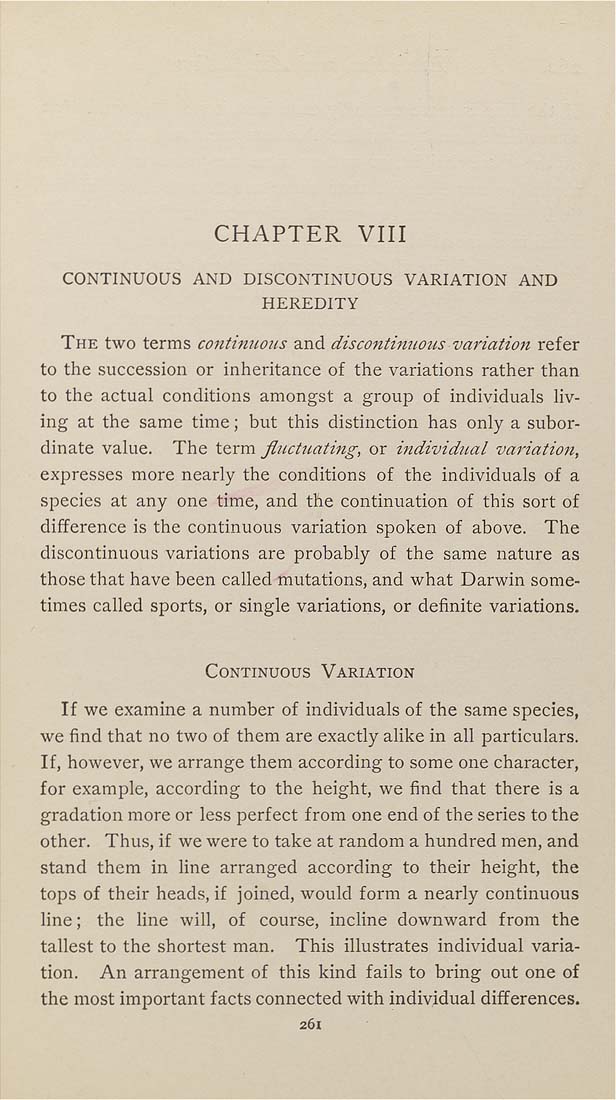CHAPTER VIII
CONTINUOUS AND DISCONTINUOUS VARIATION AND
HEREDITY
The two terms continuous and discontitzuous variation refer
to the succession or inheritance of the variations rather than
to the actual conditions amongst a group of individuals liv- ,
ing at the same time; but this distinction has only a subor¬
dinate value. The term fluctuating, or individual variatiofi,
expresses more nearly the conditions of the individuals of a
species at any one time, and the continuation of this sort of
difference is the continuous variation spoken of above. The
discontinuous variations are probably of the same nature as
those that have been called mutations, and what Darwin some¬
times called sports, or single variations, or definite variations.
Continuous Variation
If we examine a number of individuals of the same species,
we find that no two of them are exactly alike in all particulars.
If, however, we arrange them according to some one character,
for example, according to the height, we find that there is a
gradation more or less perfect from one end of the series to the
other. Thus, If we were to take at random a hundred men, and
stand them in line arranged according to their height, the
tops of their heads, if joined, would form a nearly continuous
line; the line will, of course, incline downward from the
tallest to the shortest man. This Illustrates individual varia¬
tion. An arrangement of this kind fails to bring out one of
the most important facts connected with individual differences.
261
|








